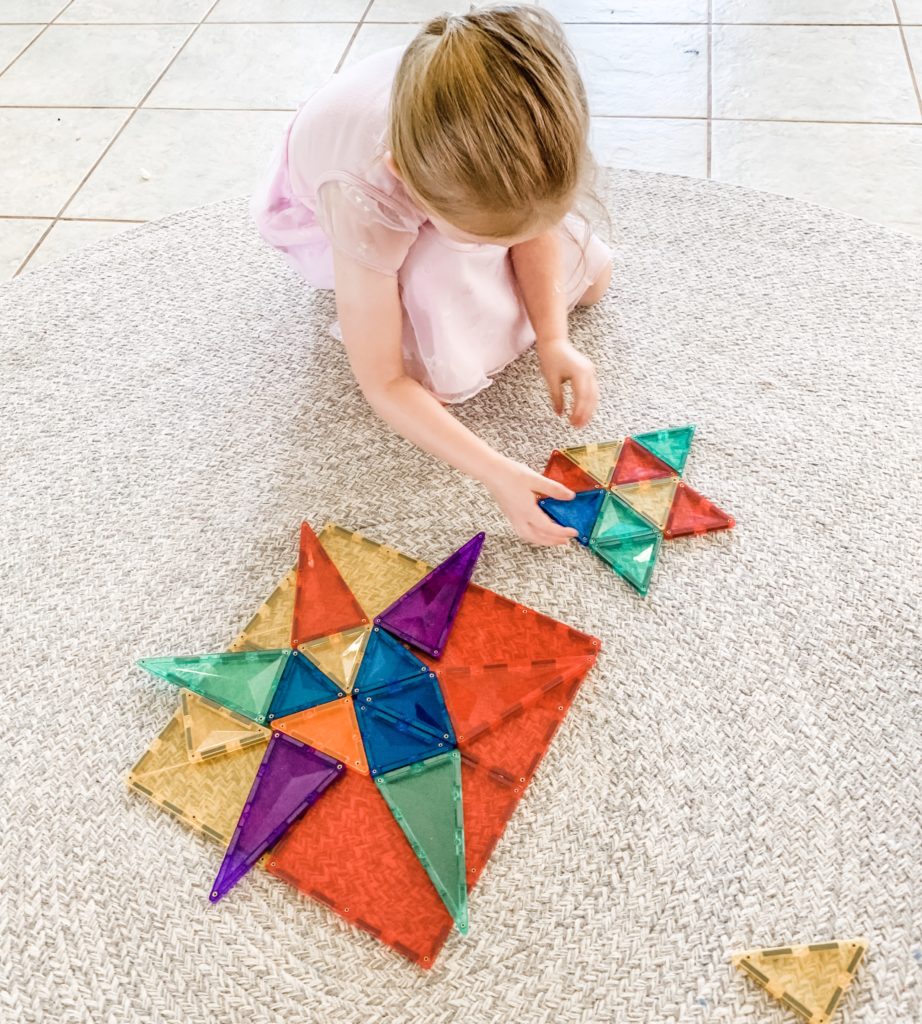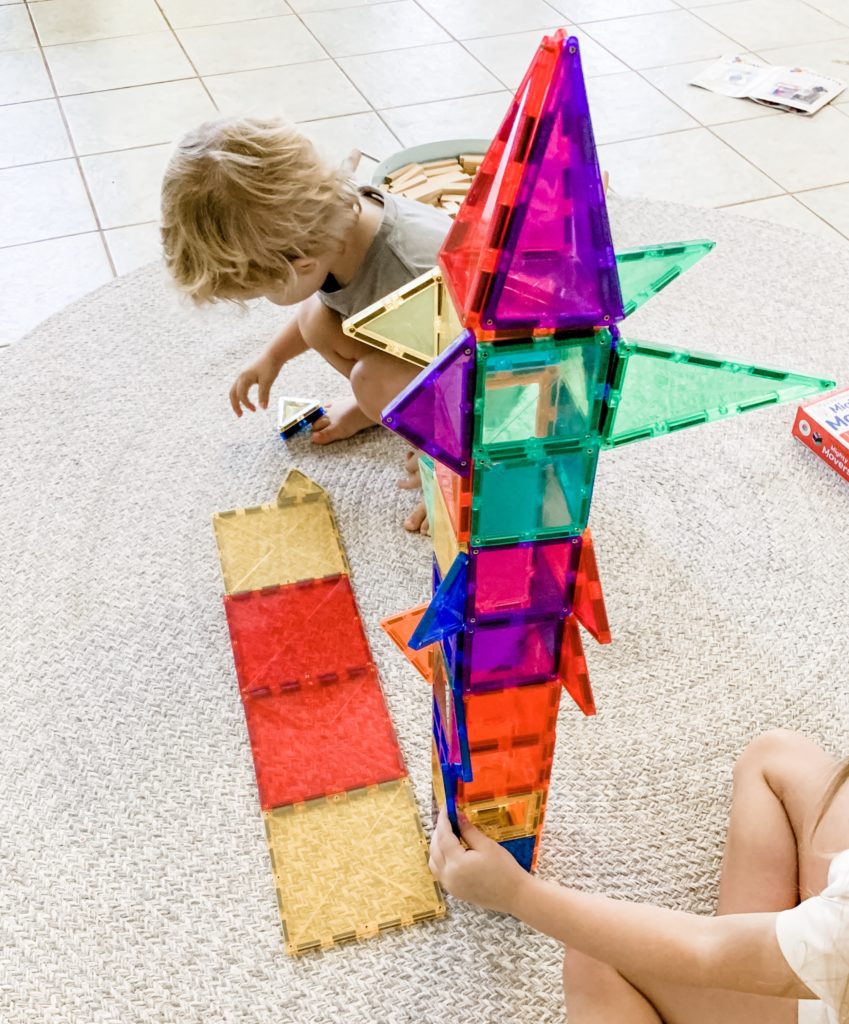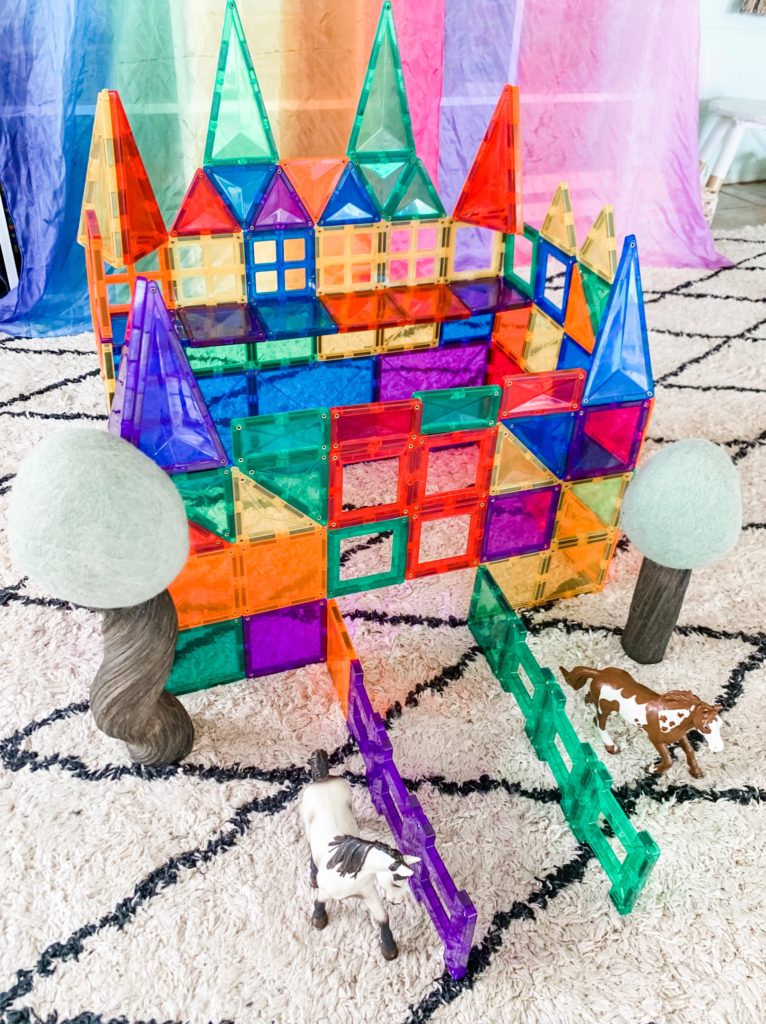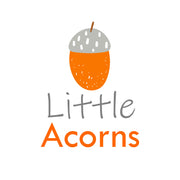
How magnetic tiles assist brain development

You can imagine that when children are born, they are born with a ‘clean slate’ in terms of learning how their world works. They have so many ‘firsts’ in their young lives that their brain needs to continue to build on top of these ‘firsts’ in order to understand what is happening around them. The more ‘firsts’ your child experiences, the more understanding they will have about their world.
Sometimes you may notice that your child is compelled to play in a certain and repeated way. When children are seen to play in a repeated way, it could mean your child is engaged in a ‘schema’. Schemas are repeated ways in which a child can focus on a set skill that their brains are interested in developing. For example, when a child repeatedly lines up their toys, they aren’t merely playing, but they are also working out how the world works around them in a sensory and methodical way. As parents and carers, we are able to take notice of a child interests and engagements to help scaffold learning and aid children in gathering information about their worlds.

Connetix is one of those tools that allow children to develop these skills. Magnetic tiles are an excellent tool for discovering through play, and there are so many ways to play with this versatile resource. One example of this, is cause and effect. Cause and effect is all about discovering what happens as a result of an action, such as building up and knocking down. There are so many questions their undeveloped brains are answering by building and knocking down. For example, if they build up a tower and knock it down, will it fall down? What if they build it up a different way, will it fall the same way? And, if they push it a little harder next time, what happens then?

Have you noticed the different ways in which your child likes to play? Maybe next time you see them playing independently you can sit and watch them for a while. What do you notice? They may be working within a certain schema, or more than one schema. Take a look below at the early childhood schemas, which have been coined by developmental psychologists. You may notice your child chooses to work within one or many. Under each schema you will find Connetix activities they may enjoy to further these skills and interests.
Transporting Schema
Do you notice your child moving objects from one place to another?
If your child enjoys doing this, they may enjoy:
- Making shapes out of purple tiles and taking it outside into the sun to see their reflections, and coming back inside to try out a different colour
- Taking a cube outside to collect some coloured flowers/leaves and bringing them back inside to sort
Enclosing Schema
Do you notice your child putting toys or themselves inside of things (such as tunnels, boxes or fences)?
If your child enjoys doing this, they may enjoy:
- Building fences to put animals in paddocks
- Building an ‘arm x-ray’ to place their arm into for an imaginary doctor surgery
- Putting a torch light into their tower or rocket
Trajectory Schema
Do you notice your child throwing things (even when they know they aren’t allowed to throw a certain object)?
If your child enjoys doing this, they may enjoy:
- Rolling a tennis ball into small towers to see how many they can knock down
- Putting the slightest bit of bubble mixture on a magnetic tile and catching bubbles on top
- My favourite – building the biggest tower you can and knocking it down
Rotational Schema
Do you notice your child rotating themselves or objects (such as a tap on and off or spinning around)?
If your child enjoys doing this, they may enjoy:
- Building a ball run with steps and a ramp – watch a marble roll down
- Playing with cars and Connetix – put number/alphabet stickers on the cars, write the numbers/alphabet with whiteboard markers onto the Connetix and drive the cars into the ‘correct’ homes.
Connecting Schema
Do you notice your child joining items together (such as gluing or tying things together, putting blocks together and taking them apart)?
If your child enjoys doing this, they may enjoy:
- Building anything with Connetix – these magnetic tiles are the best for building and taking things apart and they cling to each other (strong magnets) so it gives them such determination to connect and disconnect to their hearts content.
Enveloping Schema
Do you notice your child covering or hiding themselves or objects (putting objects into bags)?
If your child enjoys doing this, they may enjoy:
- Putting scarves inside a block building or covering the whole building with a scarf
- Help them cover their feet with new ‘shoes’
Orientation Schema
Do you notice your child turning themselves upside down or looking from a different perspective?
If your child enjoys doing this, they may enjoy:
- Making ‘binoculars’ with Connetix and taking them outside to find wildlife
Transforming Schema
Do you notice your child mixing things together (such as sand and water)?
If your child enjoys doing this, they may enjoy:
- Your child will love putting Connetix together to blend colours – you can add the yellow on top of the blue tile to make green!
- Making a robot with Connetix – transforming the tiles into something amazing!
Positioning Schema
Do you notice your child ordering and lining up objects?
If your child enjoys doing this, they may enjoy:
- Ordering and lining up the Connetix into colours or shapes
- Making a line across the room with flat tiles
I hope this helped you gain some in depth understanding about how and why your child plays. My children and myself are big fans of Connetix, we use them every day in our play. I hope you find them as inspiring and educational as we have! Thank you for reading and happy building!


